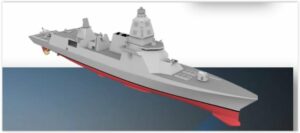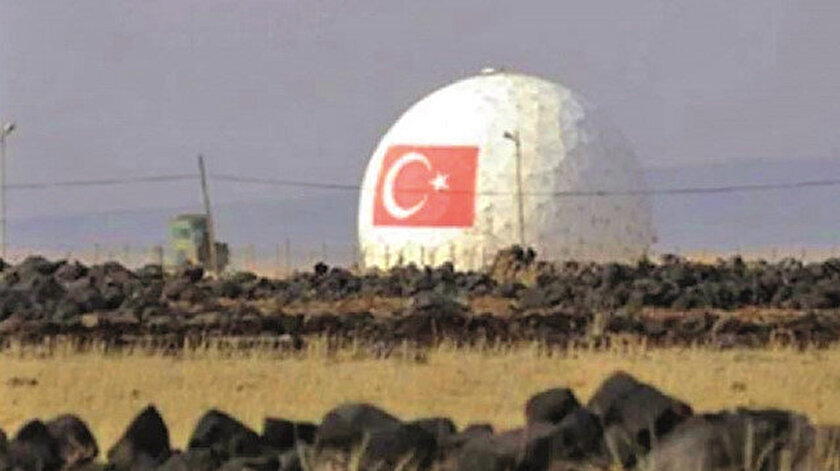Fatih Yurtsever*
The military operation launched by Russia last Thursday to invade Ukrainian territory continues on three axes. The Russians have taken Ukraine’s coastline in the Sea of Azov. Odessa is under fire. If Odesa falls, Russia will have largely taken control of the Black Sea and will be the most effective naval power in it. The basis of maritime strategy is to force other countries to act in line with your rights and interests through naval power. From now on, Turkey will feel the political pressure resulting from Russia’s supremacy in the Black Sea more strongly. As historical experience shows, whenever Russia has become more assertive, it wants to exert its influence over the straits, such as Stalin attempted to do after World War II.
Thanks to the balance achieved so far, the Montreux Convention on the Straits has ensured peace and tranquility in the Black Sea. However, the changing balance of naval power and the geopolitical landscape in the Black Sea forces us to ask the following question: What will happen if disagreements arise between Turkey and Russia over the implementation and interpretation of the provisions of the Montreux Convention? In particular, Turkey has interpreted the issue of the passage of submarines through the straits in favor of Russia. Will Turkey refuse passage to Russian submarines that seek to transit the straits to serve in the eastern Mediterranean? Whether Turkey will implement the Montreux Convention to serve peace and security as it has in the past depends on it being an effective naval power that balances Russia in the Black Sea.
The dominance of Russian naval power in the Black Sea will provide Russia with an enormous threat emanating from ballistic and hypersonic cruise missiles capable of carrying nuclear warheads. The European continent is inadequately shielded against Russia’s ballistic missiles and nuclear strikes. The security needs and threat perceptions of Turkey and the EU countries arising from Russia’s naval power in the Black Sea overlap. Turkey has the potential to become a major player in the European security architecture in the Black Sea under the auspices of the US and NATO. However, Turkey needs to repair the deterioration of its relations with NATO and the United States caused by its rapprochement with Russia after Turkey shot down a Russian Sukhoi Su-24M attack aircraft in 2015 and take concrete steps to retake its place in the Western alliance. The purchase of the S-400 air defense system from Russia, the dominance of the Blue Homeland doctrine created by pro-Russian officers in Turkish foreign policy and the purging of officers committed to the values of NATO from the Turkish Armed Forces after a failed coup on July 15, 2016 have damaged Turkey’s modern image.
Turkey had gone through a similar phase prior to the adoption of the 2010 NATO Strategic Concept and the deployment of radar in Kürecik, Turkey. As a non-permanent member of the United Nations Security Council, Turkey voted against imposing sanctions on Iran in 2010. The debate about Turkey shifting its axis from West to East resumed in the Western media. These discussions ended when Turkey accepted the deployment of the NATO Ballistic Missile Defense System’s early warning radar at Kürecik, Turkey, demonstrating its place within the Western alliance and avoiding an axis shift.
The European Phased Adaptive Approach (EPAA)
In 2009 then-US President Barack Obama announced the Phased Adaptive Approach (PAA), a new strategy for regional ballistic missile defense (BMD) operations. NATO decided at the Lisbon Summit in 2010 to establish a missile defense system that would protect against ballistic and cruise missiles and integrate with the US national missile defense system. The first application of PAA was in Europe, where it is called the European Phased Adaptive Approach (EPAA). In the initial phase of EPAA, AN/TPY-2 X-band radar was installed in Kürecik, and BMD-capable AEGIS warships were deployed to the Mediterranean. Phase 2 included establishing the AEGIS Ashore facility in Romania, which announced its first operational capability in May 2016 with the addition of SM-3 Block IB interceptors, significantly expanding the defended area. Phase 3 of EPAA includes establishing an AEGIS offshore facility in Poland equipped with upgraded SM-3 Block IIA interceptors.
Kürecik radar is the most crucial element of the NATO Missile Defense System for Europe
Kürecik hosted the US Air Force radar and communication relay station in the past. The station, established in 1961, continued to monitor Soviet airspace until its mission ended in 1991. AN/TPY-2 early warning and detection radar, the most crucial element of this system, was activated in Kürecik by the US in February 2012. However, Allied Air Command at Ramstein Air Base in Germany is responsible for the command and control of the system, including the Kürecik radar and other system elements.
AN/TPY-2 radar can send information from thousands of kilometers away (obtained by detecting and following ballistic missiles fired from Russia and Iran) to the AGEIS Ashore missile defense system and the AEGIS ships in the Mediterranean, which will destroy the missiles. However, NATO BMD officially defines the target as threats emanating from outside the Euro-Atlantic area, and it is not directed against Russia. NATO BMD could be updated accordingly. Considering Russia’s invasion of Ukraine and its threat to use nuclear weapons for the first time since the 1962 Cuban Missile Crisis, the EPAA must be enhanced to incorporate additional capabilities for defending Europe against nuclear-capable ballistic and cruise missiles.
Turkey’s naval power could balance the Russian Navy in the Black Sea

Turkey needs a naval force capable of regional air defense against cruise missiles and ballistic missiles in the Black Sea, for both its security and the security of Europe. EU member states and NATO can assist Turkey by providing financial support and transferring weapons technology to build TF-2000 frigates, which have not yet begun construction, to build a naval force capable of countering Russian naval power in the Black Sea. Under EPAA, the TF-2000 frigates can be armed with SM-3 or Aster-15 and Aster-30 missiles for air defense. The TF-2000 air defense frigates, which will be deployed in the Black Sea, will make an essential contribution to the security of Europe and Turkey. NATO BMD for the Black Sea will be anchored by the Kürecik radar and TF-2000 air defense frigates.
* Fatih Yurtsever is a former naval officer in the Turkish Armed Forces. He is using a pseudonym out of security concerns.

